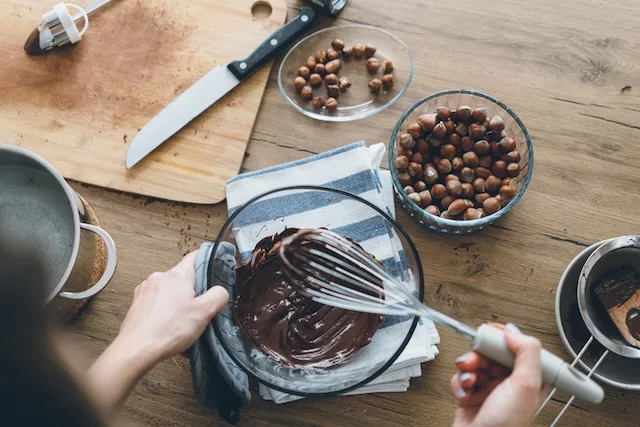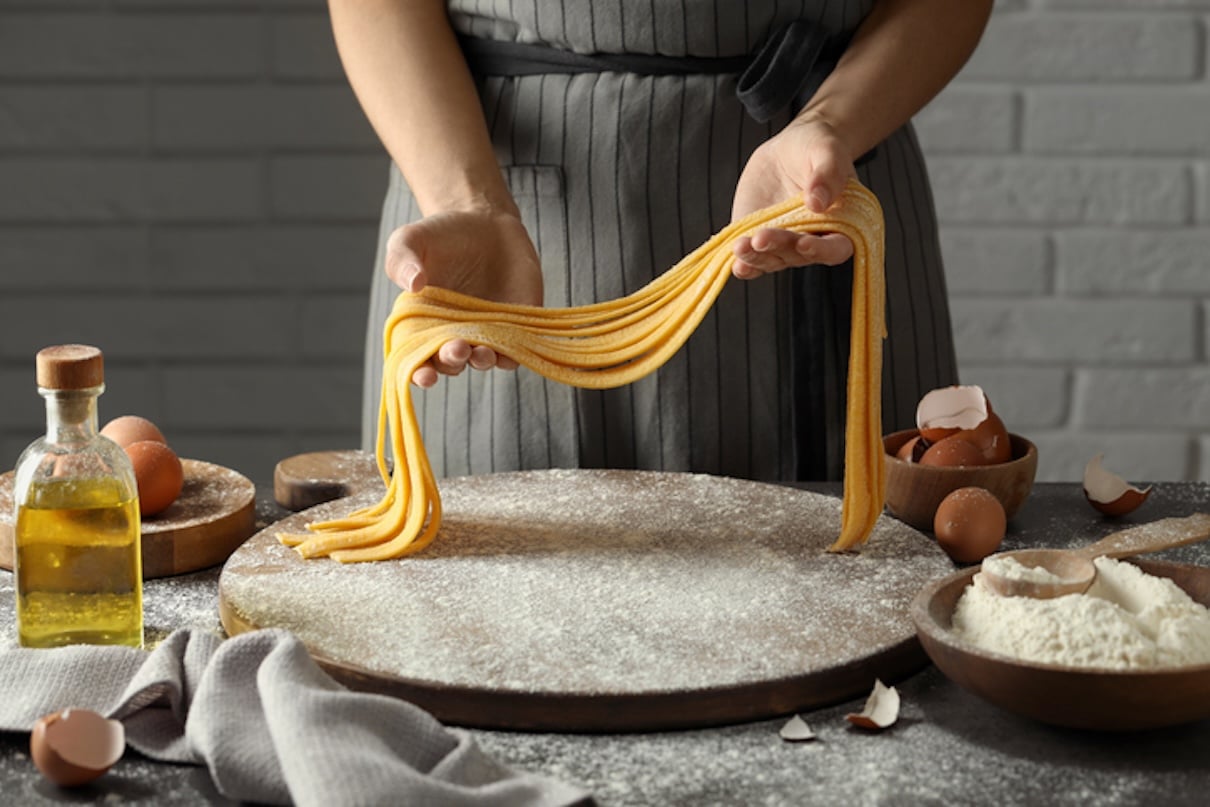Cheat Day Healthy Meals to Make Indulgence that Much More Fun
When it comes to the concept of a cheat day, many people envision indulging in greasy burgers, rich ice cream sundaes, and portions that seem to rebel against the idea of a "healthy" diet. The term "cheat" itself implies wrongdoing, a temporary departure from the rules before returning to the pursuit of more virtuous eating habits. However, what if I told you that some of your favorite so-called "cheat-day foods" actually have real value, even nutritional benefits? They might even qualify as "healthy meals" depending on your perspective.
Although cheat meals often include foods that are considered indulgent, a cheat meal can still be nutrient-dense and nutritionally balanced, explains functional dietitian Jenna Volpe, RDN, LD, CLT. "For example, adding a serving of broccoli or leafy greens to a carb-heavy dish like pizza or macaroni and cheese can make this common 'cheat meal' more balanced and nutrient-dense," she says. "Swapping refined grains for whole grains can also help redefine a cheat meal from a nutritional standpoint."

Take chocolate, for instance. While milk chocolate may not be a nutritional powerhouse, dark chocolate—especially varieties with 70 percent cacao or higher—is rich in antioxidants, magnesium, and flavonoids that support heart health, notes Volpe. Similarly, cheese is often dismissed as an indulgence, but aged cheeses like Parmesan and cheddar contain probiotics that support gut health, along with essential nutrients like calcium and B vitamins. Even ice cream can provide a significant dose of calcium, while mashed potatoes (especially when made with heart-healthy olive oil) offer potassium, which is crucial for muscle function and cardiovascular health.
The truth is, categorizing foods as "good" or "bad" oversimplifies nutrition and often leads to guilt or restriction. Instead of saving up all your cravings for a single day of indulgence, a more balanced approach to eating allows room for enjoyment without shame. In fact, many beloved comfort foods, from dark chocolate to cheese and even pizza, offer unexpected health benefits when consumed in moderation and with a focus on quality ingredients.
Instead of fixating on cheating, let's reframe the conversation around making intelligent, gratifying choices. Adding fiber-rich veggies to pizza, choosing whole-grain pasta, or selecting high-quality dark chocolate over sugary desserts are all ways to embrace indulgence without compromising nutrition. Eating mindfully, paying attention to hunger cues, and abandoning the restrictive mindset can help make all foods a normal, enjoyable part of a well-rounded diet.
Before dismissing your favorite comfort foods as dietary blunders, consider this: the key to a healthy diet isn't elimination—it's balance. Continue reading as our experts delve into the cheat-day foods that are secretly packed with benefits, along with tips on how to enjoy them in a way that supports your overall health goals.
Cheat Day Food List
Dark Chocolate
While most people reserve chocolate for special occasions or indulgent desserts, it's important to remember that chocolate originates from a bean—from the cacao tree native to Central and South America. Despite its association with indulgence, it actually provides relaxation and mood-boosting effects due to its rich flavor and serotonin-boosting properties. Dark chocolate is undoubtedly the healthiest option—it's packed with flavonoids, a type of antioxidant that helps reduce inflammation and improve heart health by enhancing blood flow and lowering blood pressure. Additionally, it's a fantastic source of magnesium, which aids in muscle relaxation and stress reduction.
To maximize the benefits, Volpe suggests opting for dark chocolate with 70 percent cacao or higher, as higher cacao content offers more antioxidants and less added sugar. Enjoying a couple of small squares after a meal or incorporating cacao powder into smoothies is an excellent way to savor it in a balanced manner.
Cheese
Although cheese is often viewed as a guilty pleasure, it actually serves as a great source of protein, calcium, and probiotics—especially in aged varieties like Parmesan, cheddar, or gouda. Aged cheeses contain live cultures that promote gut health, making them a natural probiotic food, as Volpe explains. Furthermore, cheese delivers essential B vitamins, phosphorus, and vitamin K, all of which contribute to bone health and metabolism.
However, portion size is crucial—while cheese is rich in nutrients, it's also calorie-dense, so sticking to 1–2 ounces per serving allows you to enjoy the benefits without excessive saturated fat. For a balanced and satisfying snack, pair cheese with whole-grain crackers for fiber, fresh fruit for natural sweetness and antioxidants, or nuts for heart-healthy fats. Whether enjoyed on its own or as part of a meal, cheese can be both a delightful and functional addition to a well-rounded diet.
Pizza
Pizza often receives a bad reputation as a guilty pleasure, but with the right ingredients, it can actually be a nutrient-dense and well-balanced meal that satisfies both cravings and nutritional requirements. At its core, pizza combines carbohydrates, protein, healthy fats, and essential vitamins—all of which can be optimized for better health benefits, according to Volpe.
Starting with the crust, opting for a whole-grain or cauliflower base boosts fiber intake, aiding in digestion and maintaining more stable blood sugar levels than refined white flour crusts. Whole grains also offer B vitamins and antioxidants that support energy production and overall well-being. The tomato sauce is rich in lycopene, a potent antioxidant known for its heart-protective benefits and its ability to reduce the risk of certain cancers like prostate, breast, and lung cancer.
Toppings make a significant difference—swap processed meats for lean proteins like grilled chicken or tofu, and load up on veggies like spinach, mushrooms, and bell peppers for additional fiber, vitamins, and minerals. Cheese, when consumed in moderation, provides calcium, protein, and probiotics, while plant-based alternatives or nutritional yeast can offer a dairy-free option.
Ice Cream
Ice cream isn't just a dessert—it's a complete dessert experience. That creamy, sweet, and perfectly chilled bite instantly transports you back to childhood summers, late-night cravings, and celebrations large and small. While it's often viewed as an indulgence, ice cream actually boasts some genuine nutritional benefits when enjoyed in moderation.
For starters, it's an excellent source of calcium, providing about 150 mg per ½ cup serving, which supports strong bones and muscle function, as Frances Largeman-Roth, RDN, dietitian, and author of Smoothies & Juices: Prevention Healing Kitchen explains. Some varieties—especially those made with Greek yogurt or whey protein—even contain a decent amount of protein. Additionally, dairy-based ice creams contain beneficial fatty acids that may contribute to metabolic health.
Mashed Potatoes
Mashed potatoes represent the ultimate comfort food classic—often served as a side dish on holidays like Thanksgiving or Christmas. Beyond their cozy, nostalgic appeal, they offer some remarkable health benefits. Potatoes are packed with potassium, a crucial mineral that supports heart health and muscle function, and they naturally contain fiber, especially if you leave the skin on.
While traditional mashed potatoes tend to be butter-heavy, swapping in olive oil adds heart-healthy monounsaturated fats. Looking to elevate them even further? Consider incorporating cauliflower or roasted garlic for additional fiber and a flavor boost. To create a balanced, feel-good meal, pair your mashed potatoes with lean protein like grilled fish or chicken.
Pasta

Pasta enthusiasts, rejoice—you don't have to give up your favorite dinner to stay on track with your health goals. In fact, when prepared with the right ingredients, pasta can be a nutrient-packed, energy-boosting meal that satisfies both your cravings and your body's needs.
A reliable source of complex carbohydrates, pasta provides consistent energy to keep you fueled throughout the day. Opting for whole-grain or legume-based pasta increases the fiber and protein content, supporting digestion and keeping you feeling full for longer. And if you're opting for a tomato-based sauce, you're also benefiting from a dose of lycopene, a potent antioxidant that promotes heart health. To take your pasta to the next level, pair it with lean protein like chicken, tofu, or seafood, and incorporate veggies like spinach, zucchini, or mushrooms for added vitamins and minerals.
Ultimately, no food has to be the enemy of your health goals—it's all about balance, mindset, and mindful decisions. Instead of restricting all week just to indulge on a "cheat day," try integrating flex meals throughout the week. This way, you can enjoy your favorite treats without feeling deprived or going overboard.
Cheat Meal as Healthy Meals FAQs
1. What exactly is a cheat meal?
A cheat meal refers to a single meal or food choice that deviates from your regular healthy eating plan. It's typically high in calories, sugar, or fat and is seen as a way to indulge in your favorite foods without guilt. The goal is to allow yourself some flexibility in your diet while still adhering to your overall health and fitness objectives.
2. How often should I have a cheat meal?
The frequency of cheat meals depends on your personal goals, fitness level, and dietary preferences. For most individuals, having a cheat meal once a week or once every two weeks can strike a good balance. However, it's important to listen to your body and avoid excessive indulgence. Some may opt for a "cheat day," but moderation is key to maintaining a healthy lifestyle.
3. How can I enjoy a cheat meal without sabotaging my health goals?
To prevent a cheat meal from derailing your progress, consider these strategies:
- Portion Control: Instead of overindulging, savor a small portion of your favorite indulgent food.
- Balance: Pair the cheat meal with healthier sides, like vegetables or whole grains, to ensure it remains nutrient-rich.
- Stay Active: Exercise before or after your cheat meal to help offset the additional calories.
- Mindfulness: Eat slowly and relish each bite to avoid overeating and feel more satisfied.
4. Can a cheat meal lead to weight gain?
A single cheat meal won't significantly impact your weight in the long term if you generally follow a balanced, healthy eating regimen. However, frequent overindulgence could contribute to excess calories and hinder progress. It's crucial to maintain balance and refrain from using cheat meals as an excuse to overeat regularly.
5. What are healthier alternatives to typical cheat meals?
If you want to indulge without compromising your health, consider swapping traditional cheat meals for healthier alternatives. For example:
- Pizza: Opt for a cauliflower crust or whole-grain crust pizza with plenty of veggies and lean protein.
- Burgers: Choose a lean turkey or veggie burger with a whole-wheat bun.
- Ice Cream: Select a low-calorie, dairy-free, or protein-packed ice cream substitute.
